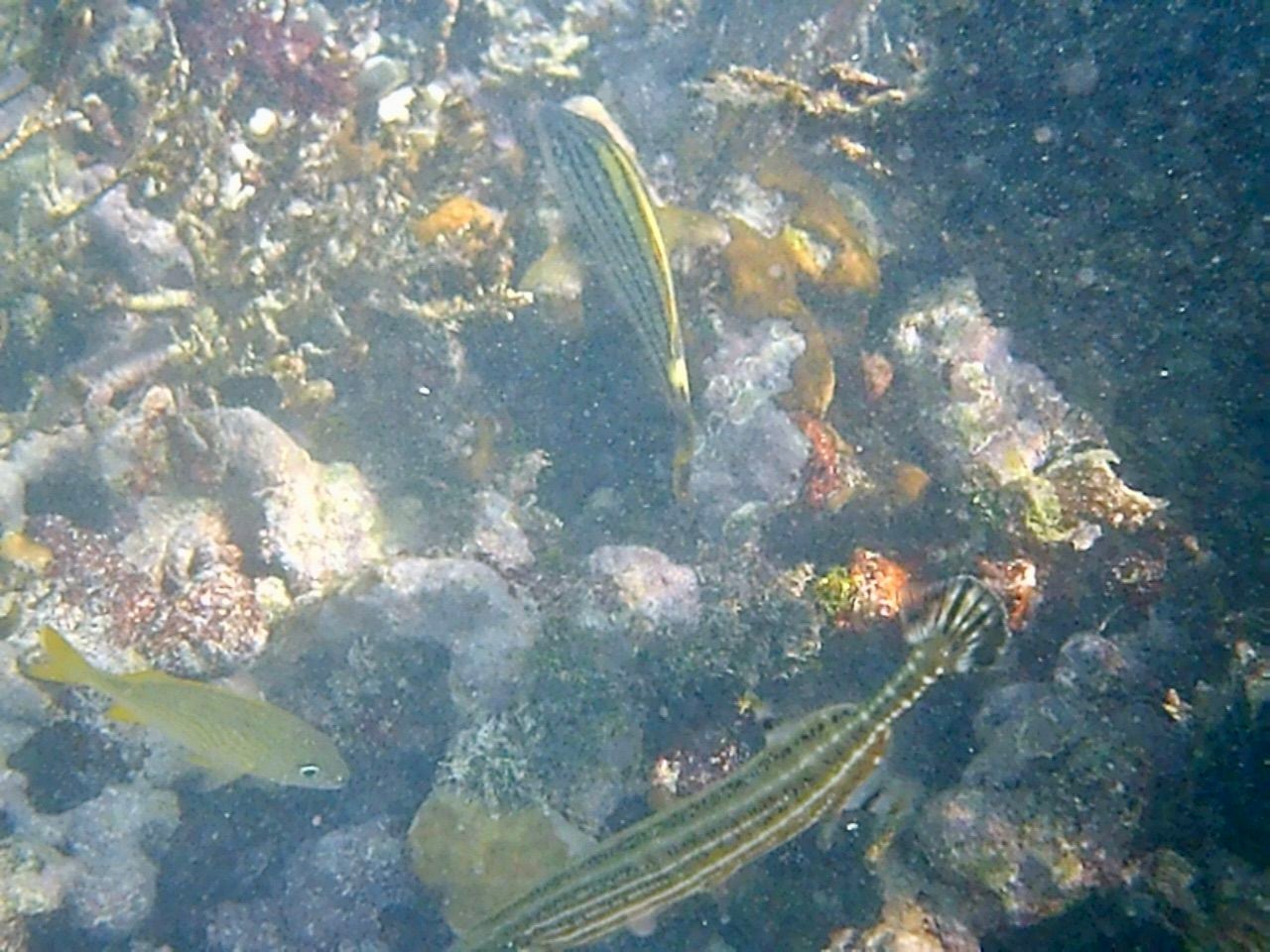KEY LARGO, Florida – I saw my first sea life before we left the dock on our snorkeling trip.
A manatee! The captain pointed. There it was, its bewhiskered face slurping drips of freshwater from a hose. And then another pair of manatees. And a baby barracuda.
Animals I’d never seen outside an aquarium are omnipresent in the Florida Keys, where pelicans perch on pilings and chickens meander across the streets of Key West.
The place is otherwordly for other reasons, too. In regular life, I don’t lie in a hammock. I don’t drive a convertible. Or drink a frozen key lime colada next to the ocean at lunch.
But that’s the point of the Florida Keys, which stretch 113 miles over 44 islands, to the southernmost point of the United States. You get to slow down, look around and embrace the hot-and-humid, chill-out-at-the-tiki-bar vibe.
I’ve wanted to see the Keys since the Beach Boys first crooned “Jamaica, off the Florida Keys” in their 1988 hit, “Kokomo.” I was 8 and had no idea that Kokomo was not a real place. But the Keys are the closest you can come in the United States to a Caribbean paradise, and you can drive there, over 42 bridges along the Overseas Highway, Florida’s only All-American Road.
The best way to experience the Keys, though, is on the sparkling turquoise water, both the Atlantic Ocean to the east and Florida Bay to the west. (Not just because I was so sweaty on land.)
Over four kid-free days in mid-November, I kayaked, stand-up paddleboarded and swam open-water at our resort on Long Key. And we took a half-day snorkel tour in Key Largo, considered one of the best snorkel destinations in the United States.

Fish and coral were only a few feet below me in the reef.Laura Johnston, cleveland.com
Key Largo’s John Pennekamp Coral Reef State Park, the first undersea park in the country, covers 178 nautical square miles of seagrass beds, mangrove swamps and part of North America’s only coral barrier reef. It’s adjacent to the Florida Keys National Marine Sanctuary, which protects 6,000 species of marine life and covers 3,800 square miles, past Key West to the Dry Tortugas.
The park is known for the dramatic Christ of the Abyss statue, which was sunk 25 feet below the surface in 1965. Unfortunately the ocean was too rough for us to see the statue on our snorkel trip.
But we moored at two spots, on the reef and over the shipwreck of the S.S. City of Washington, which was moored near the U.S.S. Maine battleship in Havana Harbor in 1898, when the Maine exploded and started the Spanish American War.
The boat was being towed in 1917 when it ran aground and sunk on Elbow Reef.
More than a century later, that’s where I saw a swirling school of yellow-tailed snapper, a jellyfish, a sea turtle and a couple of parrotfish.

The remains of the S.S. City of Washington, off the coast of Key Largo.Laura Johnston, cleveland.com
We booked our trip with Silent World Dive Center, where Captain Mike and his mate, Emily, were exceptionally lovely.
For about $70 per person, the two-and-a-half hour trip includes use of all snorkel equipment, plus reef-safe sunscreen, pop and chips on board. Back at the dock, the shop includes clean bathrooms, outdoor games and shaded brightly painted picnic tables, plus outdoor showers.
My husband and I got a little seasick on the boat, even though we took Dramamine. The showers were a welcome finish to our trip.
And so was the bucket-sized Key Largo iced tea I sipped afterward to refuel at nearby Jimmy Johnson’s Big Chill, where my conch fritters came with a gorgeous ocean view.
If you go: Key Largo
Getting there: Key Largo, the northernmost Florida Key, is an easy drive south from Miami and Fort Lauderdale airports, both with nonstop service from Cleveland Hopkins. John Pennekamp park is about 60 miles south of Miami and 90 miles south of Fort Lauderdale. Key West also has an airport, with one-stop service from Cleveland.

The Florida Keys are heaven for fresh seafood, key lime pie and delicious, boozy concoctions, like this Key Largo iced tea.Laura Johnston, cleveland.com
